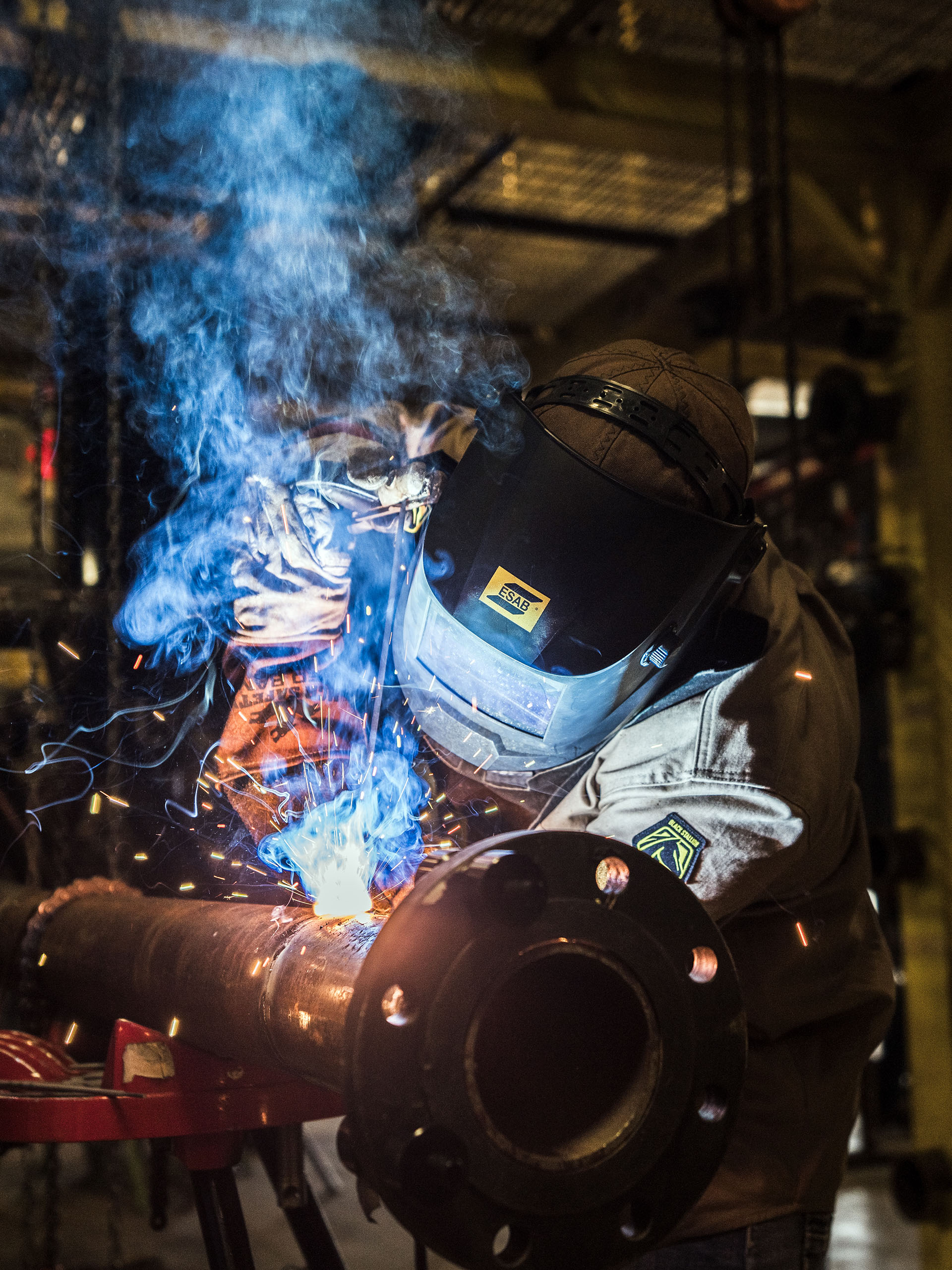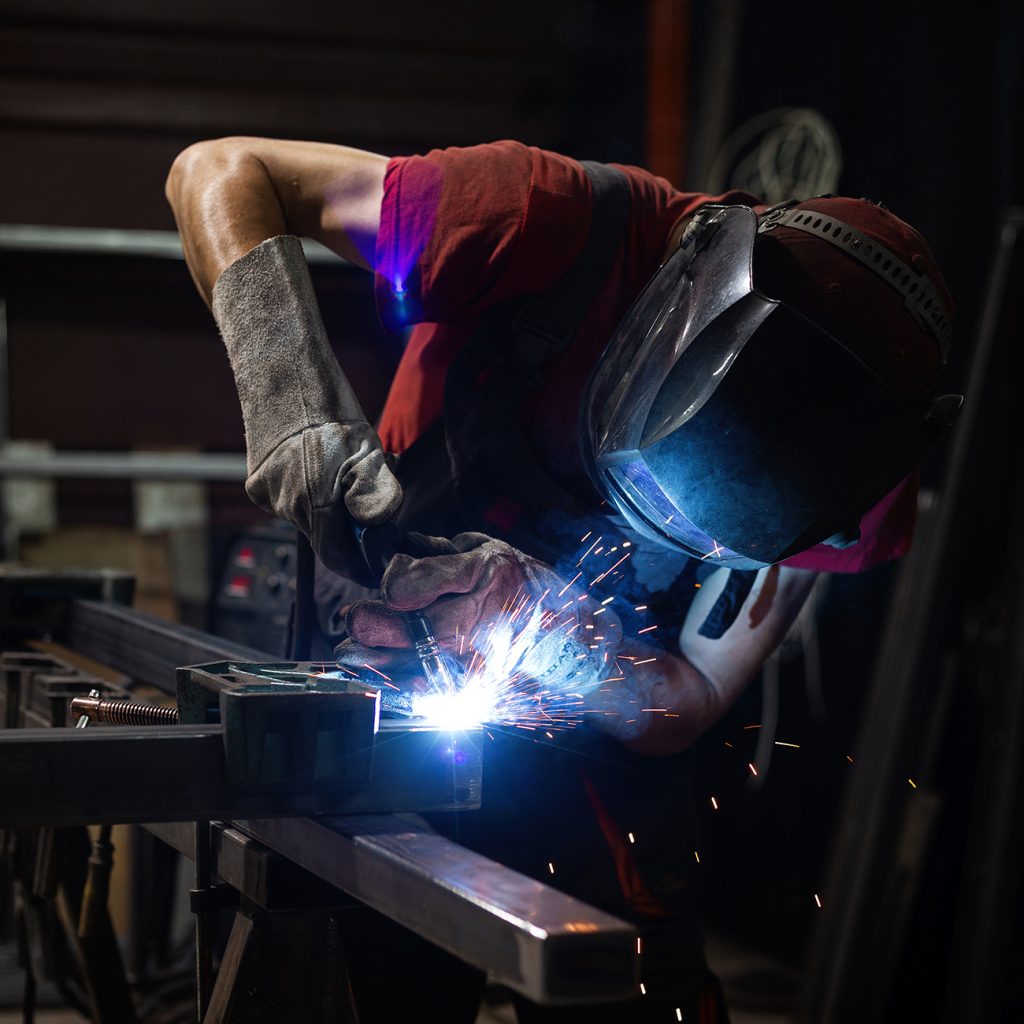How to prevent distortion in Montana Mobile Welding and Repair Welding projects
Wiki Article
Usual Welding Repair Work Issues and Just How to Address Them Efficiently
Welding repair services usually encounter a series of concerns that can jeopardize the integrity of the final product. Usual problems include inadequate infiltration, porosity, and misalignment, to name a few. Each flaw provides one-of-a-kind difficulties that need certain approaches for resolution. Comprehending these problems is essential for welders intending to enhance their abilities and results. This discussion will explore these usual welding fixing problems and efficient techniques to resolve them.Inadequate Penetration
Inadequate infiltration takes place when the weld metal fails to fully fuse with the base material, causing weak joints and possible architectural failures. This problem often comes from not enough heat input, wrong electrode angle, or improper welding rate. Welders might encounter insufficient penetration as a result of a miscalculation of the needed parameters for a specific product density or kind. In addition, contamination on the base product's surface can hinder reliable bonding, worsening the trouble. To deal with inadequate penetration, welders must guarantee ideal settings on their equipment and preserve a clean job surface area. Regular evaluation of welds is suggested to recognize any shortages early, permitting timely corrections and the prevention of endangered architectural integrity in bonded settings up.Porosity
Porosity is a typical problem in welded joints that manifests as little gas bubbles trapped within the weld metal. This problem can compromise the stability of the weld, causing reduced toughness and prospective failure under stress. Belgrade Fabrication. Porosity normally arises from contamination, wetness, or incorrect welding strategies, which allow gases to run away into the liquified weld pool. To address porosity, welders ought to ensure proper surface area preparation, preserve a tidy workplace, and use appropriate welding specifications. Furthermore, choosing the best filler material and protecting gas can minimize gas entrapment. Normal assessment and testing of welds can help identify porosity early, guaranteeing prompt restorative activities are taken, consequently maintaining the quality and reliability of the welded structureMisalignment
Misalignment in welding can emerge from numerous aspects, consisting of incorrect setup and thermal development. Recognizing the origin triggers is crucial for effective resolution. A number of correction techniques are available to realign components and guarantee structural stability.Reasons for Imbalance
Welding misalignment usually stems from a selection of underlying issues that can endanger architectural honesty. One main cause is inappropriate fit-up of elements before welding, which can lead to voids and uneven surface areas. Variations in thermal development during the welding process can additionally result in distortion, particularly if the products being signed up with have various coefficients of expansion. Additionally, poor securing and fixturing may fall short to hold components firmly in location, leading to motion during welding. Improperly maintained equipment, consisting of welding equipments and tools, may present inconsistencies in the weld grain, additional adding to misalignment. Driver error, stemming from not enough training or experience, can additionally play a considerable role in producing misaligned welds.Adjustment Methods Available
Attending to imbalance properly calls for a mix of restorative strategies tailored to the particular issues available. One typical technique is making use of jigs or fixtures to hold components in the right setting during welding, making sure regular alignment. Additionally, preheating the materials can help in reducing distortion and enhance fit-up. For significant misalignment, mechanical realignment techniques, such as using hydraulic jacks or clamps, can be used to correct the position prior to welding. Post-weld warm therapy may likewise be needed to eliminate stress and anxieties triggered by imbalance. Lastly, careful evaluation and modification during the arrangement stage can avoid imbalance concerns from ending up being considerable troubles, promoting a smoother welding procedure and improving overall architectural integrity.Distortion
Distortion is a typical challenge in welding that can develop from various aspects, including unequal heating and cooling. Recognizing the reasons for distortion is vital for executing effective prevention methods. Addressing this problem not just enhances structural honesty however additionally boosts the general top quality of the weld.Sources of Distortion
When subjected to the intense heat of welding, products usually undergo adjustments that can lead to distortion. This phenomenon primarily develops from thermal development and contraction throughout the welding procedure. As the weld area warms up, the material broadens; upon air conditioning, it gets, which can develop inner tensions. Additionally, unequal home heating throughout a workpiece can worsen these anxieties, causing warping or flexing. The sort of product additionally plays a considerable duty; steels with differing thermal conductivity and coefficients of growth may react differently, leading to unpredictable distortions. Additionally, bad joint design and inadequate fixturing can contribute to imbalance during welding, raising the possibility of distortion. Recognizing these causes is crucial for reliable welding repair work and prevention strategies.Avoidance Techniques
Efficient avoidance methods for distortion during aws d1 3 welding emphasis on managing heat input and making certain correct joint design. Preserving a regular warmth input assists to minimize thermal development and contraction, which can lead to distortion. Using techniques such as pre-heating the workpiece can additionally minimize the temperature slope, advertising uniform home heating. Furthermore, picking proper joint designs, such as T-joints or lap joints, can improve security and reduce anxiety concentrations. Applying appropriate fixturing to safeguard the workpieces in position better aids in maintaining positioning during the welding procedure. Finally, staggered welding sequences can disperse heat a lot more evenly, avoiding localized distortion. By using these strategies, welders can substantially decrease the possibility of distortion and boost the total quality of their welds.Fracturing
Fracturing is a common problem run into in welding repairs, usually resulting from various aspects such as inappropriate cooling rates, material choice, or poor joint prep work. The event of cracks can significantly compromise the integrity of the weld, bring about possible failures during procedure. To resolve this concern, welders have to first examine the root creates, ensuring that materials are compatible and properly picked for the specific application. Additionally, managing the cooling rate during the welding procedure is vital; fast air conditioning can generate anxiety and cause splitting. Appropriate joint layout and prep work likewise add to decreasing the danger. Executing these methods can boost weld quality and sturdiness, eventually lowering the probability of splitting in finished weldments.
Incomplete Blend
A considerable concern in welding repair work is incomplete blend, which occurs when the weld steel does not sufficiently bond with the base product or previous weld passes - Belgrade Welding. This issue can result in weak points in the joint, potentially jeopardizing the stability of the welded framework. Elements adding to insufficient blend include not enough heat input, incorrect welding technique, and contamination of the surfaces being joined. To address this concern successfully, welders need to ensure appropriate pre-weld cleansing and surface prep work, in addition to change their welding specifications to accomplish adequate infiltration and fusion. Normal evaluation during the welding process can additionally aid identify insufficient combination early, permitting timely restorative measures to enhance the total high quality of the weldOverheating
While welding repair services can enhance structural honesty, overheating provides a significant challenge that can bring about material destruction. Extreme warm throughout welding can modify the mechanical residential or commercial properties of metals, resulting in decreased stamina, boosted brittleness, and warping. This sensation is specifically critical in high-stress applications where structural dependability is critical. Recognizing getting too hot can involve aesthetic inspections for discoloration or distortion, as well as keeping an eye on temperature during the welding procedure. To alleviate the threats related to overheating, welders should employ proper strategies, such as managing heat input, changing traveling rate, and utilizing appropriate filler materials. Additionally, executing pre- and post-weld warm therapies can assist bring back product buildings and improve the total quality of the repair, guaranteeing lasting performance and safety and security.Often Asked Questions
What Are the Usual Indications of a Welding Flaw?

How Can I Test My Welds for High quality?
To check welds for top quality, one can utilize aesthetic inspections, ultrasonic screening, and radiographic techniques. Each method ensures structural honesty, identifies defects, and verifies adherence to defined standards, ultimately improving the integrity of the bonded joints.What Safety and security Preventative Measures Should I Take While Welding?
When welding, one must focus on safety by wearing suitable personal safety tools, guaranteeing correct air flow, protecting flammable products away, preserving a tidy workspace, and recognizing environments to prevent injuries and crashes.Can I Fix a Weld Without Remodeling the Entire Joint?
Fixing a weld without redesigning the entire joint is feasible, depending on the damages (Fabrication). Techniques such as grinding, adding filler material, or using a welding process can successfully resolve particular flaws while protecting the bordering structureWhat Devices Are Necessary for Effective Welding Services?
Vital tools for efficient welding repairs consist of a welding machine, wire brush, mill, safety gear, clamps, and filler products. Each tool plays an important function in guaranteeing quality and safety and security throughout the repair work process. Porosity typically emerges from contamination, moisture, or inappropriate welding techniques, which enable gases to run away right into the liquified weld pool. Poorly conserved devices, consisting of welding machines and tools, may present inconsistencies in the weld grain, more adding to misalignment. When subjected to the intense heat of welding, materials frequently undertake modifications that can lead to distortion. Fracturing is a typical problem run into in welding fixings, usually resulting from different aspects such as inappropriate cooling rates, product option, or insufficient joint prep view publisher site work. A considerable problem wikipedia reference in welding repair work is incomplete fusion, which happens when the weld steel does not sufficiently bond with the base material or previous weld passes.Report this wiki page